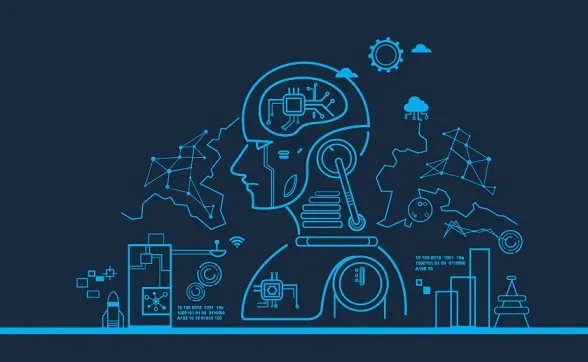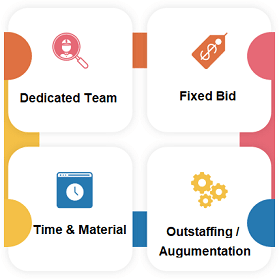From automation of complex processes to analysis of subtle patterns to aid planning, cognitive technology can be a powerful business tool. However, the pace of innovation has been accompanied by concerns over the risks that new and emerging technologies pose, creating a demand for ways to understand, mitigate and control these risks.
What is Cognitive Technology?
Cognitive technology is a field of computer science that mimics functions of the human brain through various means, including natural language processing, data mining, and pattern recognition. It is expected to have a drastic effect on the way that humans interact with technology in the coming years, particularly in the fields of automation, machine learning, and information technology.
These software-based technologies leverage the velocity, volume, and variety of big data generated by next-generation networks to intelligently evolve the tradeoff between network speed, cost, and quality. With unique domain knowledge built into the algorithms, cognitive technologies transform operations to deliver on complex and diverse business goals, taking service providers closer than ever to zero-touch networks.
Cognitive Technologies to look out for in the future
Following are Cognitive Technologies to look out for:
1. Big Data Analytics
Big data analytics is the process of analyzing huge volumes of data to draw patterns, trends, and actionable insights with the help of machines having advanced computational capabilities.
2. Machine Learning
Machine learning is a continuous process where machines learn new things using the data provided, with some human supervision from time to time.
3. Natural Language Processing
The objective of Natural Language Processing is to train machines with human soft skills to bring about changes in their language and responses; making them more human-like.
4. Artificial Intelligence
Artificial Intelligence drives the automation of rudimentary tasks with computers serving as advanced digital assistants.
5. Process Automation
Process automation enables one to interlink the various functions, automate the workflow, and have minimal errors.
Benefits of Cognitive Technology
Following are benefits of Cognitive Technology
1. Operational efficiency
Scan the entire data in minutes, proactively identifying 50 percent more issues with up to 98 percent field-validated accuracy and increasing operational efficiency by up to 40 percent.
2. Good experience
Deliver a superior user experience and reduce bad-quality areas by 40 percent based on the pillars of right-on-time expansions, timely launch, and proactive optimization.
3. CAPEX rationalization
Evaluate pertinent what-if scenarios with surgical accuracy for bottleneck prediction, preserving investment by up to 20 percent and preventing user experience degradation.
4. Faster time to market
Speed up launch, with up to 50 percent faster acceptance through a data-driven approach that eliminates redundancies.
Features of Cognitive Technology

Natural Language Processing (NLP)
Natural language processing strives to build machines that understand and respond to text or voice data—and respond with text or speech of their own—in much the same way humans do.
What Is Natural Language Processing?
Natural Language Processing, or NLP for short, is broadly defined as the automatic manipulation of natural language, like speech and text, by software.
The study of natural language processing has been around for more than 50 years and grew out of the field of linguistics with the rise of computers.
Apart from common word processor operations that treat text as a mere sequence of symbols, NLP considers the hierarchical structure of language: several words make a phrase, several phrases make a sentence and, ultimately, sentences convey ideas, ” John Rehling, an NLP expert at Meltwater Group, says in How Natural Language Processing Helps Uncover Social Media Sentiment. By analyzing language for its meaning, NLP systems have long filled useful roles, such as correcting grammar, converting speech to text and automatically translating between languages.”
NLP is used to analyze text, allowing machines to understand how humans speak. This human-computer interaction enables real-world applications like automatic text summarization, sentiment analysis, topic extraction, named entity recognition, parts-of-speech tagging, relationship extraction, stemming, and more. NLP is commonly used for text mining, machine translation, and automated question answering.
NLP is characterized as a difficult problem in computer science. Human language is rarely precise or spoken. To understand human language is to understand not only the words but the concepts and how they’re linked together to create meaning. Despite the language being one of the easiest things for the human mind to learn, the ambiguity of language is what makes natural language processing a difficult problem for computers to master.
How NLP Functions: Exploring Natural Language Processing Mechanics

There are two main phases to natural language processing: data preprocessing and algorithm development.
Data preprocessing involves preparing and "cleaning" text data for machines to be able to analyze it. preprocessing puts data in the workable form and highlights features in the text that an algorithm can work with. There are several ways this can be done, including:
- Tokenization: Text is broken down into smaller units
- Stop word removal: Common words are removed
- Lemmatization and stemming: Words are reduced to their root forms to process
- Part-of-speech tagging: Words are marked based on the part-of-speech they are -- such as nouns, verbs, and adjectives
Once the data has been preprocessed, an algorithm is developed to process it. There are many different natural language processing algorithms, but two main types are commonly used:
- Rules-based system: System uses carefully designed linguistic rules
- Machine learning-based system: Using a combination of machine learning, deep learning and neural networks, natural language processing algorithms hone their own rules through repeated processing and learning.
Speech Recognition
Back in 2008, many of us were captivated by Tony Stark’s virtual butler, J.A.R.V.I.S, in Marvel’s Iron Man movie. J.A.R.V.I.S. started as a computer interface and was eventually upgraded to an artificial intelligence system that ran the business and provided global security.
What is Speech Recognition?
Speech recognition, also known as automatic speech recognition (ASR), computer speech recognition, or speech-to-text, is a capability that enables a program to process human speech into a written format. While it’s commonly confused with voice recognition, speech recognition focuses on the translation of speech from a verbal format to a text one whereas voice recognition just seeks to identify an individual user’s voice.

Working of Speech Recognition
Speech recognition works using algorithms through acoustic and language modeling. Acoustic modeling represents the relationship between linguistic units of speech and audio signals; language modeling matches sounds with word sequences to help distinguish between words that sound similar.
Often, hidden Markov models are used as well to recognize temporal patterns in speech to improve accuracy within the system. This method will randomly change systems where it is assumed that future states do not depend on past states. Other methods used in speech recognition may include natural language processing (NLP) or N-grams. NLP makes the speech recognition process easier and takes less time. N-Grams, on the other hand, is a relatively simple approach to language models. They help create a probability distribution for a sequence.

More advanced speech recognition software will use AI and machine learning. These systems will use grammar, structure, syntax as well as the composition of audio and voice signals to process speech. Software using machine learning will learn more the more it is used, so it may be easier to learn concepts like accents.
Features of effective Speech Recognition
Many speech recognition applications and devices are available, but the more advanced solutions use AI and machine learning. They integrate grammar, syntax, structure, and composition of audio and voice signals to understand and process human speech. Ideally, they learn as they go — evolving responses with each interaction.
The best kind of system also allows organizations to customize and adapt the technology to their specific requirements — everything from language and nuances of speech to brand recognition. For example:
- Language weighting: Weighting specific words that are spoken frequently
- Speaker labeling: Tags each speaker’s contributions to a multi-participant conversation
- Acoustics training: Train the system to adapt to an acoustic environment (ambient noise / voice pitch / volume)
- Profanity filtering: Filters to identify certain words or phrases and sanitize speech output
Business Use Case - Organizations who are leveraging the Technology
Cora- Intelligent Agent by Royal Bank of Scotland
With the help of IBM Watson, Royal Bank of Scotland developed an intelligent assistant that is capable of handling 5000 queries in a single day. Using cognitive learning capabilities, the assistant gave RBS the ability to analyze customer grievance data and create a repository of commonly asked questions
Healthcare Concierge by Welltok
Welltok developed an efficient healthcare concierge – CaféWell that updates customers relevant health information by processing a vast amount of medical data. CaféWell is a holistic population health tool that is being used by health insurance providers to help their customers with relevant information that improves their health. By collecting data from various sources and instant processing of questions by end-users, CaféWell offers smart and custom health recommendations that enhance the health quotient.
Personal Travel planner to simplifying travel planning by WayBlazer
Powered with cognitive technology, WayBlazer’s travel planer makes it easier for travelers to plan for trips by asking questions in natural language. The concierge asks basic questions and provides customized results by collecting and processing travel data as well as insights about traveler preferences.
Edge up’s Smart Tool to Manage Fantasy Football Teams via Mobile App
Fantasy Football is a very popular entertainment pastime for more than 33 million people around the globe. With the help of cognitive learning and computing, Edge Up Sports developed a tool and integrated with their mobile app that helped users to draft their fantasy teams by asking simple questions.
Summary
Cognitive technologies such as artificial intelligence, machine learning, natural language processing (NLP), robots and others, are already providing businesses opportunities to harmonize the use of human resources and accomplish better outcomes from customer interactions. Today, companies are starting to realize the benefits of integrating cognitive technologies into their business processes. They have the potential to enhance customer experiences as well as lessen operational costs, enabling enterprises to drive efficiency.
Therefore, in the coming years, making use of cognitive technologies will assist organizations to make better decisions. They will also help in developing a better infrastructure that enables businesses to lay the foundation of customized and streamlined customer experiences, personalizing the customer journey, and improving the overall customer engagement with a brand.
Read more blogs here



